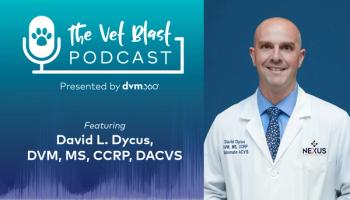
Iams opens pet imaging center
Vienna, Va.-Veterinarians in the area surrounding Washington D.C. and Baltimore now have access to the latest technology in magnetic resonance imaging (MRI).
Vienna, Va.-Veterinarians in the area surrounding Washington D.C. and Baltimore now have access to the latest technology in magnetic resonance imaging (MRI). The Iams Company unveiled in April the country's first facility dedicated solely to MRI for animals.
MRI technology provides veterinarians with a better diagnostic tool which enables them to identify diseases and other medical problems in their earlier stages.
"It's really exciting to have this technology in our own backyard," says Dr. George Siemering, a local practitioner. "It will revolutionize the way we diagnose cases from now on. "Better diagnosis leads to better treatment for our patients."
MRI is an advanced imaging technique using magnetic energy and radio waves to create detailed images of tissues. It is best to diagnose diseases of the brain, spine, skeleton, joints, chest, abdomen and blood vessels. MRI is especially useful in detecting many forms of cancer. MRI technology allows veterinarians to see more detailed images of injuries and diseases within pets' bodies than traditional diagnostic tests, such as X-rays. Dogs, cats and exotic pets can receive MRI scans.
Developing partnership
Dr. Stephen Pomeranz, founder and president of ProScan International, approached Iams about making MRI technology more accessible to veterinarians and their clients. ProScan, an international company that develops MRI technology and education, offered to provide the equipment and training.
"This is something Dr. Pomeranz really wanted to see get developed," says Dave Bergman, a ProScan executive. "He is a pet owner who wants to see that his pets get the best care possible. It seemed like a natural idea."
Before an MRI is performed, the animal must be anesthetized to make sure it remains still during the procedure.
The Iams Pet Imaging Center houses the most advanced equipment on the market, manufactured by Siemens and technical expertise provided by ProScan.
The 4,000-square-foot facility includes two "educational rooms" for both dogs and cats where the veterinarian can discuss the procedure with the clients. The center employs two veterinary specialists and four support staff members.
"We're now able to bring state-of-the-art medicine to dogs and cats," says Jeff Ansell, president of The Iams Company. "This directly flows from our mission statement to provide better health care to pets."
Better look
This new technology also permits veterinarians to get a better understanding of a specific problem without performing invasive procedures.
"MRI technology has really opened the door for better diagnosis, says Pat Gavin, a board-certified veterinary radiologist at the imaging center. "We're able to see in more detail how large a tumor may be or if it is increasing in size. We are also able to detect problems and diseases in the earlier stages."
Gavin spent a number of years researching brain tumors at Washington State University and had the opportunity to receive extensive training in the use of MRI technology.
"I was learning how to use this technology as it was being developed," he says.
Gavin now uses this information to interpret the MRI scans. He also spends time educating other veterinarians of the benefits of using MRI.
"There is so much value in a scan. It provides so much information and it's painless while you could perform a more invasive procedure and get little information," he says.
A client can expect to spend about $1,200 for an MRI. Exploratory surgery could cost between $800 to $1,000 and take the animal several weeks to recover.
"We've already avoided surgery for some patients," Gavin says.
Pet owners need a referral from their veterinarian to make an appointment at the Iams Pet Imaging Center. The procedure only takes a few hours and clients have the option to stay. To keep the animal quiet during the procedure, it is anesthetized for a short time. Dr. Julie Smith, a board-certified anesthesiologist, oversees this portion of the procedure.
"We carefully monitor the animal to make sure everything goes smoothly," she says.
Once the procedure is completed, Gavin issues a report within 24 hours to the referring veterinarian who then discusses treatment options with the client.
"The local veterinarians have welcomed this technology," Gavin says. "We're already ahead of schedule on the number of scans we thought we'd have by now."
Veterinarians from as far as North Carolina are referring cases to the imaging center.
Gavin says the center will also provided telemedicine consultations for veterinarians across the country.
Iams hopes to open similar facilities elsewhere in the next few years.
Newsletter
From exam room tips to practice management insights, get trusted veterinary news delivered straight to your inbox—subscribe to dvm360.





